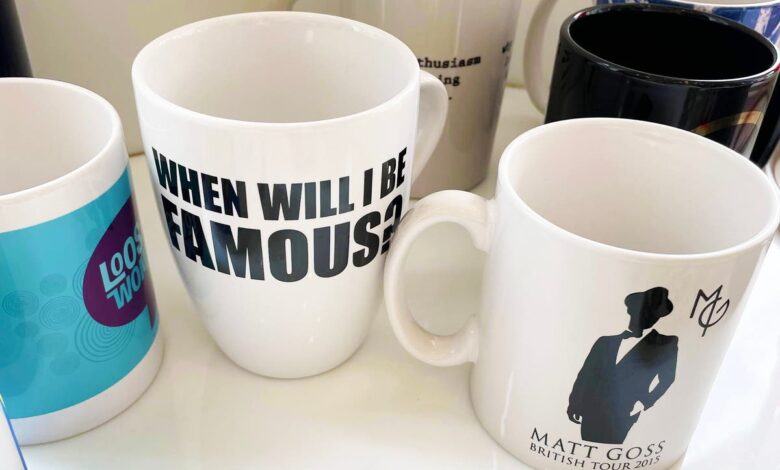Fancy buying Matt Goss’s baked beans?: Welcome to the strange cult of the American estate sale

I’m standing in the Vegas living room of an Eighties boyband pin-up and wondering which of his belongings I want to take home with me. Can I fit Matt Goss’s 1930s leather armchair into the back of the hire car? Or would I rather grab the leopard print stilettos, which I assume belong to one of the Bros star’s backing singers. But no judgement if not.
Earlier this month Goss sold off the contents of his Las Vegas home ahead of moving back to the UK for the next season of Strictly Come Dancing. The sale just so happened to coincide with the first day of my vacation, so as soon as I landed in Vegas, I knew where my first port of call would be. I arrived at his mini mansion quite late in the day, so missed the big ticket items – and also the queues – but there was still plenty to keep me occupied, not least the opportunity to wander around the gated community home that once belonged to Goss. Like the house of somebody who had left the country in a hurry, the place was littered with his unwanted possessions. Never worn suits and seemingly endless white dress shirts were hanging in wardrobes. In the kitchen were branded Loose Women mugs – the fact that he bought them over from the UK fills me with much joy – while the pantry shelves were lined with British foods that are hard to find here, including Heinz baked beans and PG Tips teabags. All was for sale. I ended up leaving with a couple of vintage brooches and, of course, a glossy photo of Goss himself. Those were given out free of charge to every attendee.
The estate sale is a uniquely American way to score a bargain, and an addictive mash of the voyeuristic and the thrifty. The living – Matt Goss, for example – can host their own estate sales, though it’s pretty rare. Usually one happens after someone has died, with the decidedly unsentimental concept based around a particular dilemma. When a loved one passes away and you’ve taken custody of every beloved memento from their home – family photos, treasured heirlooms, and jars of dusty, homemade condiments – what do you do with everything else? Where do you take the curtains, the wellies, and the pots and pans? How do you offload the slightly problematic 1970s magazines? What becomes of the trinkets, the tat and the tchotchkes?
In the UK, the answer tends to involve an emotional trip to Oxfam or, more ruthlessly, a rather big skip. But in the US, they’re found a way to both streamline and, naturally, monetise the process. Estate sale companies will price up everything you don’t want, and then let a bunch of deal-hunting strangers rummage through the house’s cupboards and drawers, buying up unwanted books, furniture, clothes and knick knacks for a knockdown price. It’s usually an everything-but-the-kitchen-sink kind of a deal. Apart from the instances where the kitchen sink is indeed part of the deal.
The very first time I went to an estate sale it felt weird and more than a little creepy. Here I was, a decade ago give or take, in a gorgeous mid-century house overlooking Los Angeles’s Silverlake reservoir and browsing the rails of a dead woman’s wardrobe. A dead woman with immaculate taste in vintage twin sets, but a dead woman nonetheless. Plenty of others were rummaging too – the house was full of folk flicking through stacks of vinyl, scouring shelves of porcelain doodads and sniffing at the half empty bottles of perfume sitting on a dressing table. In amongst the Nylon nighties I spied a delightful 1950s woollen coat and took it to the smiling woman behind a portable cash register in the living room. There was no price listed on the coat, so I asked her how much it was, well aware that something similar in a Hollywood vintage store would set me back at least $100. The woman looked it up and down and pulled on one of the sleeves. “A dollar,” she said with a wrinkle of her nose. From that moment on I was hooked.
The secret weapon of any vintage clothes dealer, estate sales offer extremely good value. There’s often so much left behind in wardrobes that those put in charge of offloading it all – and the families of the deceased – would rather get rid of it quickly and cheaply. It’s bulky furniture and swanky silverware, not old and possibly moth-eaten skirts, that tend to cost the most. So if you’ve ever wondered how your favourite US-based Etsy stores stock up on vintage outfits… well, now you know.
At that house in Silverlake, I found it thrilling to find what I quickly decided was the perfect plaid jacket – a steal at $1. But I was most taken by being in such an atmospheric house. A perfect time capsule, it hadn’t been touched in years. Being inside it was like stepping into a slice of 20th century history. Ten years on, I’m probably right in guessing that all that history has been lost now. The house’s perfect, pink-tiled I Love Lucy kitchen has surely been taken out; the turquoise carpets ripped up and the dramatic floral wallpaper in the main bedroom steamed off. If I went back there now, I’m sure I’d find another identikit example of bland millennial design, a simulacrum of Farrow and Ball walls and pine parquet flooring as favoured by the listings on smug millennial listings site Modern House. There’d probably be a framed poster for a French film on the wall that the owners have never seen.
Sure, the concept of an estate sale is kind of grim on paper, but in reality, it’s kind of wonderful to wander around in these amazing old homes and experience a true slice of the past. And if the whole ‘dead people’ angle puts you off, then you’ve always got the likes of Matt Goss. He’ll offer you a slightly less macabre rummage sale – baked beans included.





